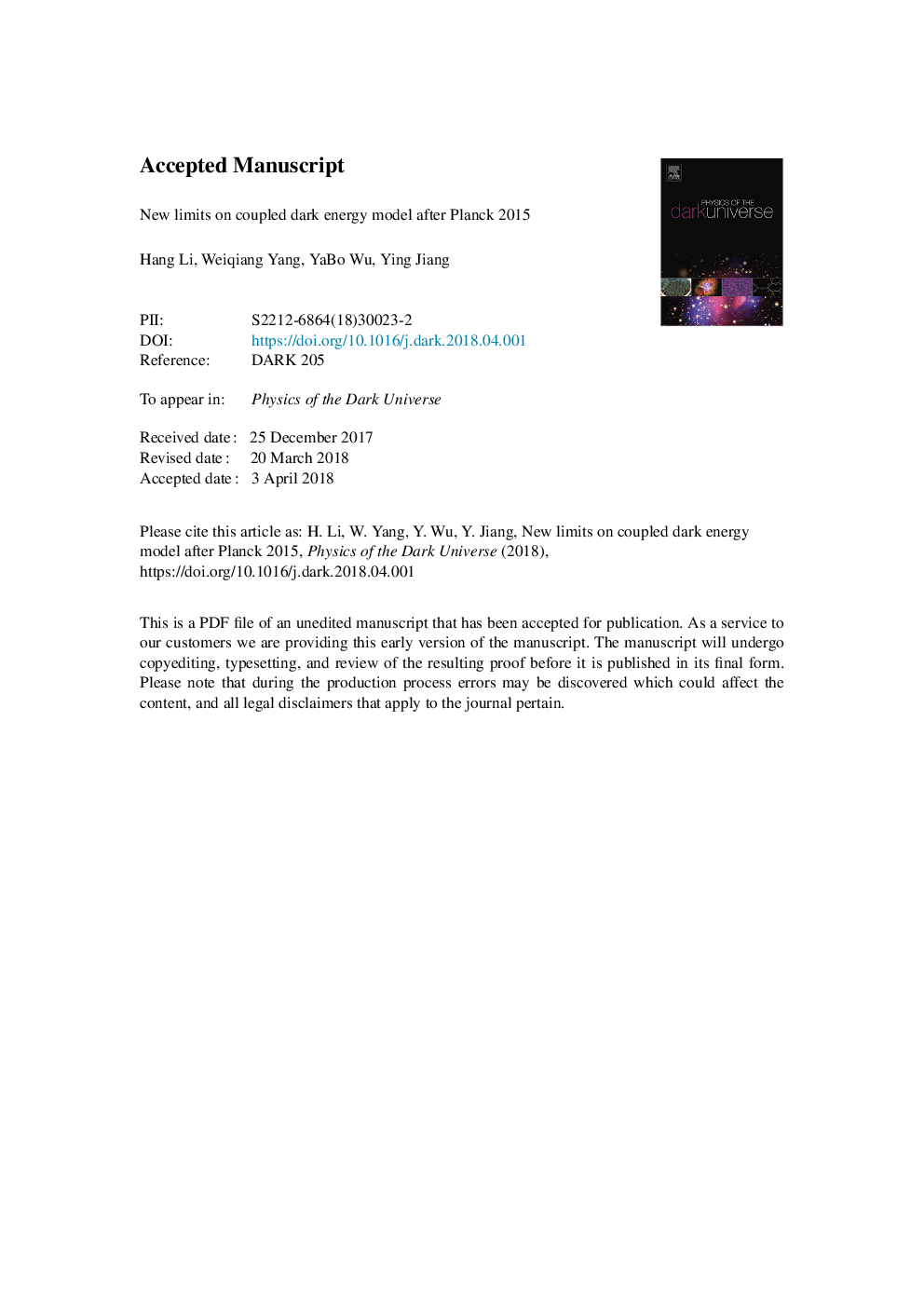| Article ID | Journal | Published Year | Pages | File Type |
|---|---|---|---|---|
| 8141813 | Physics of the Dark Universe | 2018 | 15 Pages |
Abstract
We used the Planck 2015 cosmic microwave background anisotropy, baryon acoustic oscillation, type-Ia supernovae, redshift-space distortions, and weak gravitational lensing to test the model parameter space of coupled dark energy. We assumed the constant and time-varying equation of state parameter for dark energy, and treated dark matter and dark energy as the fluids whose energy transfer was proportional to the combined term of the energy densities and equation of state, such as Q=3Hξ(1+wx)Ïx and Q=3Hξ[1+w0+w1(1âa)]Ïx, the full space of equation of state could be measured when we considered the term (1+wx) in the energy exchange. According to the joint observational constraint, the results showed that wx=â1.006â0.027+0.047 and ξ=0.098â0.098+0.026 for coupled dark energy with a constant equation of state, w0=â1.076â0.076+0.085, w1=â0.069â0.319+0.361, and ξ=0.210â0.210+0.048 for a variable equation of state. We did not get any clear evidence for the coupling in the dark fluids at 1Ï region.
Keywords
Related Topics
Physical Sciences and Engineering
Physics and Astronomy
Astronomy and Astrophysics
Authors
Hang Li, Weiqiang Yang, Yabo Wu, Ying Jiang,
